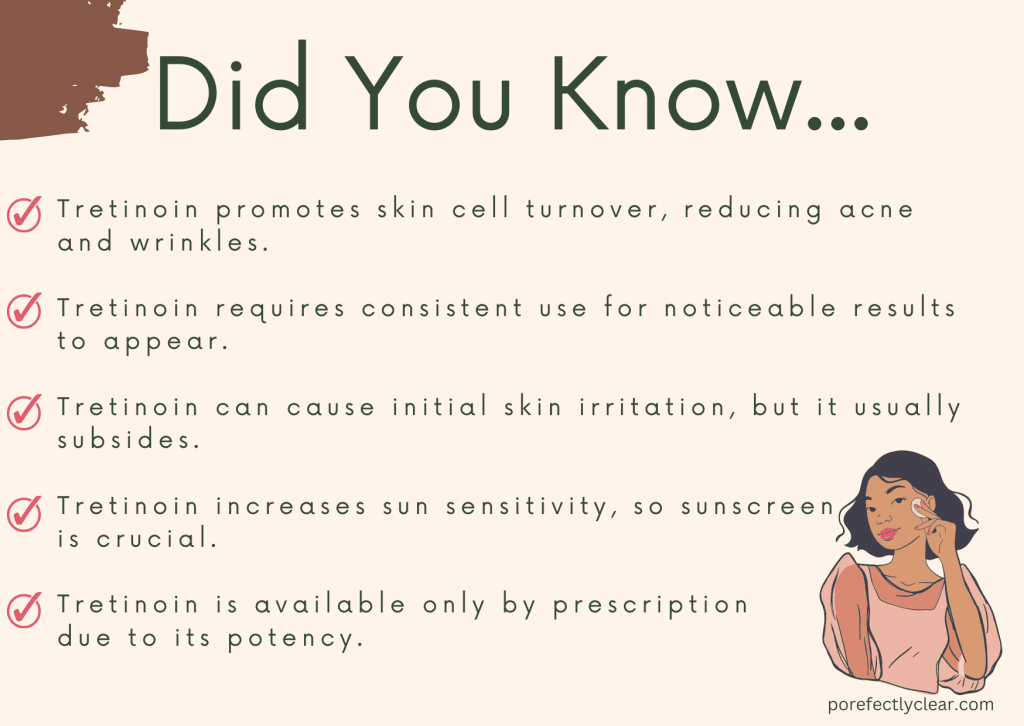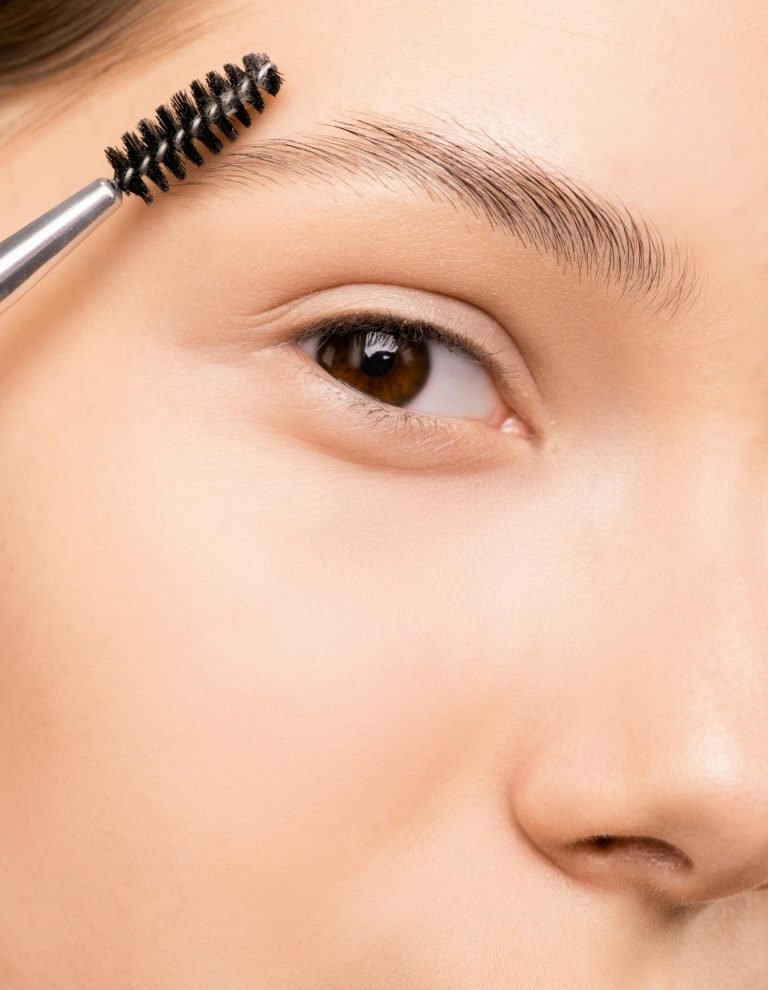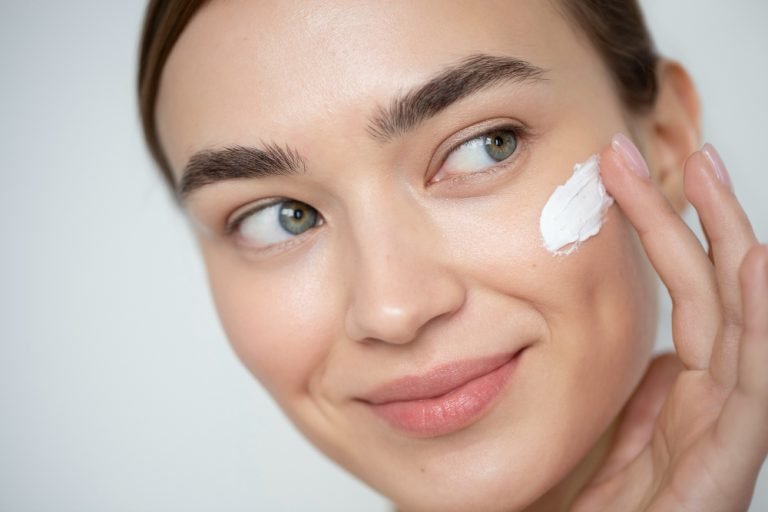The exact time to start using tretinoin after microneedling can vary depending on several factors, including the depth of the microneedling treatment, individual skin healing and sensitivity, and professional recommendations. While there is no universally agreed-upon exact time, a general guideline is to wait at least 24 to 48 hours before introducing tretinoin into your post-micro-needling skincare routine.
This timeframe allows for an adequate healing and recovery period for the skin. Waiting ensures that any redness, inflammation, or irritation resulting from the microneedling procedure has subsided, and the skin’s natural barrier has had a chance to repair and restore itself.
The idea of combining microneedling and tretinoin might seem enticing, as both treatments individually offer significant benefits. However, it’s crucial to understand the appropriate timing and considerations when incorporating tretinoin into your skincare routine after undergoing microneedling.
Understanding Microneedling and Tretinoin
What Is Microneedling?
Microneedling, also known as collagen induction therapy, is a minimally invasive cosmetic procedure that involves creating controlled micro-injuries to the skin using tiny needles.
These micro-injuries stimulate the skin’s natural healing response, triggering the production of collagen and elastin fibers. As a result, microneedling can help improve the overall texture, tone, and firmness of the skin.
The benefits of microneedling extend beyond collagen stimulation. This procedure can also enhance the penetration and absorption of topical skincare products, making it an ideal treatment for improving the effectiveness of other skincare ingredients.

What Is Tretinoin?
Tretinoin, a derivative of vitamin A, belongs to a class of medications known as retinoids. It is widely regarded as a gold standard ingredient in skincare due to its ability to promote cell turnover, reduce the appearance of wrinkles, fade hyperpigmentation, and prevent acne breakouts.
It works by increasing the rate of skin cell renewal, promoting the shedding of dead skin cells, and stimulating collagen production.
Tretinoin is available in various strengths, ranging from lower concentrations suitable for beginners to higher concentrations prescribed for more advanced users. It is typically used in the evening as a part of a skincare routine, and it is essential to wear sunscreen during the day when using tretinoin due to increased skin sensitivity to UV radiation.
When used correctly, tretinoin can significantly improve the overall health and appearance of the skin. Its ability to enhance collagen production and accelerate cell turnover makes it an attractive option for individuals seeking skin rejuvenation.

What is the best time to use Tretinoin after microneedling?
As a general guideline, it is typically recommended to wait at least 24 to 48 hours after microneedling before using tretinoin. This waiting period allows the skin to heal and reduces the likelihood of any negative reactions.
It is essential to allow an adequate recovery period before introducing any new skincare products or treatments, including tretinoin.
The duration of the recovery period can vary depending on the depth and intensity of the microneedling treatment. Typically, the initial healing phase lasts a few days to a week, during which the skin may appear slightly red or irritated. Subsequently, the skin may go through a renewal phase, where it may feel dry, tight, or flaky as new skin cells regenerate.
Tretinoin’s Effects on Post-Microneedling Skin
Tretinoin can have significant effects on the skin, including increased skin cell turnover, exfoliation, and enhanced collagen production. While these effects are beneficial for skin rejuvenation, it is crucial to consider the potential risks or side effects when using tretinoin after microneedling.
Using tretinoin too soon after microneedling can potentially increase skin sensitivity and irritation. Since the skin barrier may still be compromised and in the process of healing, the introduction of tretinoin could exacerbate these effects and lead to excessive dryness, redness, or even adverse reactions.
The Recommended Wait Time
When determining the appropriate wait time before using tretinoin after microneedling, several factors should be taken into consideration. While there is no one-size-fits-all answer, the following factors can help guide you in making an informed decision:
Skin Sensitivity and Healing
The sensitivity and healing progress of your skin plays a crucial role in determining the wait time before introducing tretinoin. It is essential to allow your skin enough time to heal and restore its barrier function fully.
If your skin is still experiencing redness, inflammation, or any signs of irritation from the microneedling procedure, it is advisable to wait until these symptoms have subsided before incorporating tretinoin.
Individual Skin Types
Different skin types have varying levels of sensitivity and tolerance to active ingredients like tretinoin. Some individuals may have more resilient skin that can handle tretinoin sooner after microneedling, while others may require a more extended wait time.
Factors such as oily or dry skin, acne-prone or sensitive skin, and previous experiences with tretinoin should be considered to determine the optimal timing.
General Tips and Recommendations
How Long Should You Wait To Use Tretinoin After Microneedling?
As mentioned earlier, a minimum wait time of two to four weeks after microneedling is often recommended before incorporating tretinoin into your skincare routine. This duration allows your skin to undergo the initial healing and renewal phases, minimizing the risk of irritation or adverse reactions when using tretinoin.
How To Start Tretinoin After Microneedling
When introducing tretinoin after microneedling, it is advisable to start with a low concentration and gradually increase it over time. This approach allows your skin to acclimate to the retinoid and reduces the likelihood of excessive dryness, redness, or peeling. Begin by applying tretinoin every few days or once a week, gradually increasing the frequency as your skin tolerates it well.
Consult with a Dermatologist
To determine the appropriate timing for incorporating tretinoin into your post-micro needling skincare routine, it is highly recommended to consult with a dermatologist or skincare professional. T
hese experts can assess your specific skin condition, evaluate the depth and intensity of the microneedling treatment, and provide personalized advice based on your skin’s needs.
A dermatologist will consider factors such as your skin type, any underlying skin conditions, and the overall healing progress of your skin before recommending the appropriate time to introduce tretinoin. Their expertise ensures a tailored approach that minimizes the risk of adverse effects and maximizes the benefits of both microneedling and tretinoin.
Conclusion
Combining microneedling and tretinoin in your skincare routine can be a powerful approach to achieving skin rejuvenation and addressing various skin concerns. However, it is essential to understand the timelines and considerations involved to ensure the optimal integration of these treatments.
Microneedling stimulates collagen production and enhances the skin’s natural healing process, while tretinoin promotes cell turnover and addresses signs of aging and acne. When used appropriately and with professional guidance, the combination of these treatments can provide synergistic benefits for healthier, more youthful-looking skin.
To determine the right timing for using tretinoin after microneedling, factors such as skin sensitivity, healing progress, and individual skin type should be considered. Consulting with a dermatologist or skincare professional is highly recommended, as they can provide personalized advice based on your specific needs and circumstances.
It is generally advised to wait at least two to four weeks after micro needling before incorporating tretinoin. Starting with a low concentration and gradually increasing it allows your skin to adjust and minimize potential side effects. Additionally, maintaining a post-tretinoin skincare routine that includes gentle cleansing, moisturization, and sunscreen protection is crucial for optimal results.





